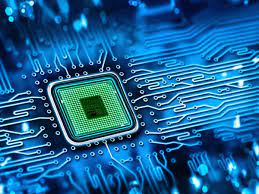CURRENT AFFAIRS
Get the most updated and recent current affair content on Padhaikaro.com
What is Semiconductor Chip shortage?
- IAS NEXT, Lucknow
- 12, Jan 2022

Reference News:
Experts have warned that Shortage of semiconductor chips would continue following the rapid spread of Omicron variant of COVID-19 across the world but the supply disruptions would not worsen in 2022 as the Omicron surge should have a milder impact on chip supply chain.
What next?
The good news is that the companies have started learning how to deal with increasingly common shortages by building buffer inventory and exploring alternative sourcing to deal with the situation.
Semiconductor Chips:
Semiconductors are materials which have a conductivity between conductors and insulators. They can be pure elements, silicon or germanium or compounds; gallium, arsenide or cadmium selenide.
Significance of Semiconductor Chips:
They are the basic building blocks that serve as the heart and brain of all modern electronics and information and communications technology products.
- These chips are now an integral part of contemporary automobiles, household gadgets and essential medical devices such as ECG machines.
Recent Increase in Demand:
The Covid-19 pandemic-driven push to take sizable parts of daily economic and essential activity online, or at least digitally enable them, has highlighted the centrality of the chip-powered computers and smartphones in people’s lives.
- The pandemic and the subsequent lockdowns across the world also forced shut crucial chip-making facilities in countries including Japan, South Korea, China and the US.
- Its shortage causes cascading effects, given that the first one creates pent-up demand that becomes the cause for the follow-up famine.
India’s Semiconductor Demand and Related Initiatives:
India currently imports all chips and the market is estimated to touch $100 billion by 2025 from $24 billion now.
- The Union Cabinet has recently allocated an amount of ₹76,000 crore for supporting the development of a ‘semiconductors and display manufacturing ecosystem’.
- India has also launched the Scheme for Promotion of Manufacturing of Electronic Components and Semiconductors (SPECS) under which a budget outlay of Rs 3,285 crore is spread over a period of eight years for manufacturing of electronics components and semiconductors.
Challenges ahead:
- High Investments Required.
- Minimal Fiscal Support from Government.
- Lack of Fab Capacities.
- Insufficient Grants under PLI Scheme.
- Resource Inefficient Sector.